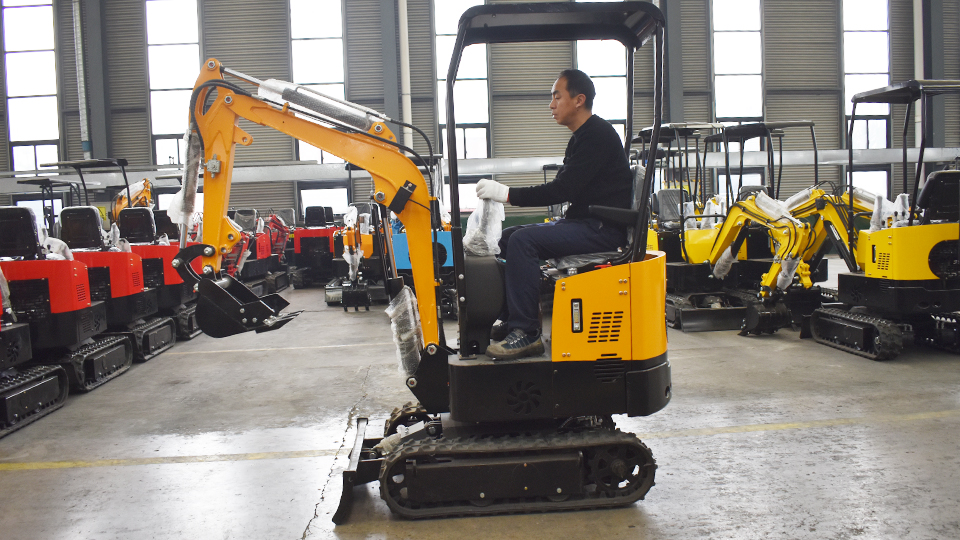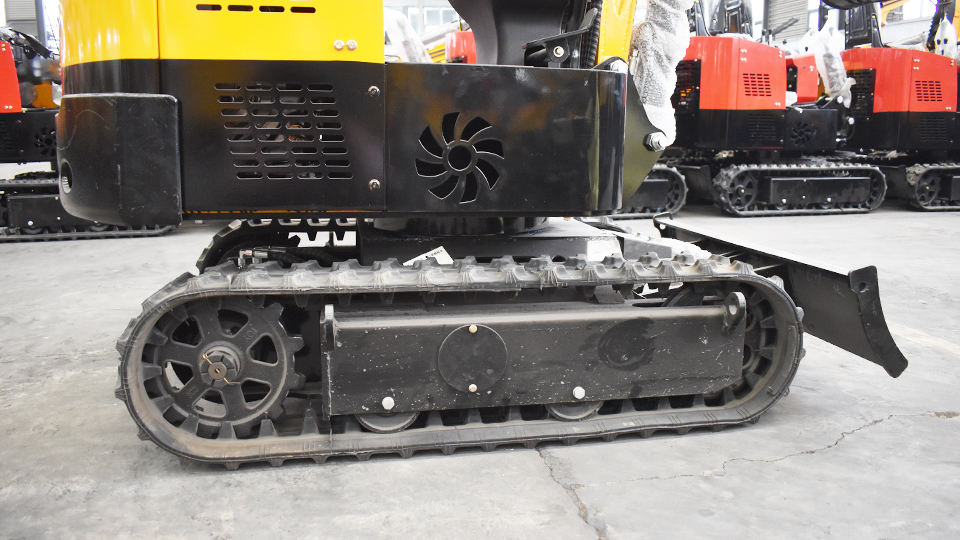The compact yet powerful mini excavator has become an indispensable workhorse across a multitude of industries, from landscaping and utility work to demolition and general construction. Their ability to access confined spaces, coupled with their versatility in performing various tasks with different attachments, makes them a crucial asset. However, navigating the diverse market and determining the "best" mini excavator for the money requires a thorough understanding of key technical specifications, operational needs, and long-term value considerations.
Defining "best for the money" transcends simply identifying the cheapest machine. It involves a holistic evaluation of initial purchase price, performance capabilities, durability, reliability, operating costs, ease of maintenance, and resale value. This technical article will delve into the critical factors to consider when seeking the optimal balance of cost and capability in a mini excavator, exploring the specifications and attributes that contribute to long-term value and highlighting some of the top contenders in various size classes within the US market as of early May 2025.
Key Factors to Evaluate When Determining "Best for the Money":
Purchase Price vs. Long-Term Value:
The initial purchase price is a significant consideration, especially for smaller businesses or individual contractors. However, focusing solely on the lowest price can be a false economy.
Long-term value encompasses factors like machine lifespan, maintenance costs, fuel efficiency (if applicable, though most mini excavators are diesel), repair frequency, and resale value. A slightly more expensive machine with superior build quality and lower operating costs may prove to be the better investment in the long run.
Operating Weight and Dig Depth:
Mini excavators are typically categorized by their operating weight, which directly correlates with their digging force, stability, and transportability. Common weight classes range from under 1 ton to around 10 tons.
Dig depth is a critical performance metric, indicating the maximum vertical reach of the bucket below ground level. The required dig depth will depend heavily on the intended applications.
Matching the operating weight and dig depth to your typical tasks is crucial for efficiency and avoiding unnecessary costs associated with a larger, more expensive machine.
Engine Power and Hydraulic Performance:

Engine horsepower dictates the overall power available for digging, lifting, and operating attachments. Modern mini excavators typically utilize robust diesel engines.
Hydraulic system performance, measured in terms of flow rate and pressure, directly impacts digging speed, attachment operation, and overall productivity. Look for smooth and responsive hydraulic controls.
Undercarriage and Stability:
The undercarriage, including the tracks and rollers, plays a vital role in stability and maneuverability, especially on uneven terrain. Rubber tracks are common for minimizing ground damage, while steel tracks offer greater durability in demanding conditions.
Zero-tail-swing (ZTS) or reduced-tail-swing (RTS) models are highly advantageous for working in confined spaces, although they may sometimes have slightly reduced lifting capacity compared to conventional tail-swing models of the same weight class.
Operator Comfort and Ergonomics:
Operator fatigue can significantly impact productivity. Features that enhance comfort and reduce strain include:
Spacious Cabins: Offering ample legroom and headroom.
Adjustable Suspension Seats: Providing support and absorbing vibrations.
Intuitive Controls: Ergonomically positioned joysticks and pedals.
Good Visibility: Minimizing blind spots for safer operation.
Climate Control (Optional): Enhancing comfort in varying weather conditions.
Ease of Maintenance and Serviceability:
Downtime for maintenance and repairs directly impacts profitability. Look for machines with:
Easily Accessible Service Points: For routine maintenance tasks like fluid checks and filter replacements.
Durable Components: Minimizing the frequency of repairs.
Readily Available Parts and Service Network: Ensuring quick turnaround times for repairs.
Attachment Versatility:
The ability to use a variety of attachments (e.g., buckets of different sizes, breakers, augers, grapples) significantly increases the versatility and return on investment of a mini excavator.
Consider the compatibility and ease of attachment changes when evaluating different models. Quick couplers are a valuable feature for maximizing efficiency.
Resale Value:
While not an immediate benefit, the resale value of a mini excavator can significantly impact the overall cost of ownership. Certain brands and models tend to hold their value better than others due to their reputation for reliability and durability.
Warranty and Dealer Support:
A comprehensive warranty provides peace of mind and protects against unexpected repair costs.
A strong dealer network with readily available support, parts, and service is crucial for minimizing downtime and maximizing the lifespan of the machine.
Top Contenders for "Best Mini Excavator for the Money" (Early May 2025, US Market):
It's important to note that "best" is subjective and depends on the specific needs and budget. However, based on a combination of factors like reliability, performance, features, and overall value proposition, here are some manufacturers and models that consistently rank highly in various size classes:
1-2 Ton Class:
Kubota KX Series (e.g., KX018-4, KX016-4): Kubota has a strong reputation for producing reliable and durable mini excavators. Their KX series in this size class offers excellent digging performance, smooth hydraulics, and good operator comfort for their size. They often hold their resale value well. While not the absolute cheapest, their longevity and low operating costs contribute to strong value.
John Deere 17G/18G: John Deere's offerings in this class provide a good balance of power, stability, and ease of operation. They often feature comfortable operator stations and readily available parts and service through their extensive dealer network.
Yanmar ViO Series (e.g., ViO17-1E): Yanmar is known for its compact and efficient machines, often featuring true zero-tail-swing for exceptional maneuverability in tight spaces. Their ViO series in this size range offers good performance and fuel efficiency.
3-4 Ton Class:
Kubota U Series (e.g., U35-4): Kubota's U series often features reduced or zero-tail-swing, making them ideal for urban environments and confined worksites. They offer a good combination of digging force, lift capacity, and operator comfort.
Bobcat E32/E35: Bobcat is a popular brand with a wide dealer network. Their E-Series excavators in this size range offer good performance and a range of features, including comfortable cabs and optional attachments.
Caterpillar 303E CR: Caterpillar is a well-established manufacturer known for its robust and reliable equipment. The 303E CR offers a compact radius design, good digging performance, and comfortable operator station.
5-6 Ton Class:
Kubota KX057-4: Stepping up in size, Kubota continues to offer strong contenders known for their reliability and performance. The KX057-4 provides increased digging force and lift capacity while maintaining good maneuverability.
John Deere 50G/60G: John Deere's models in this class offer a good balance of power, stability, and features, often including comfortable cabs with good visibility.
Bobcat E50/E55: Bobcat's offerings in this size range provide increased power and digging depth, along with various options and attachments to suit different applications.
Factors Beyond Brand and Model:
Used vs. New: The used market can offer significant cost savings, but it's crucial to thoroughly inspect the machine's condition, maintenance history, and potentially get a professional inspection.
Local Dealer Support: The quality and responsiveness of your local dealer can significantly impact the overall ownership experience. Consider their parts availability, service capabilities, and reputation.
Financing Options: Explore available financing options and interest rates, as these can affect the overall cost of ownership.

The Subjectivity of "Best for the Money":
Ultimately, the "best" mini excavator for the money is the one that best aligns with your specific needs, budget, and long-term operational goals. There is no single universally superior machine.
For contractors primarily working in extremely tight spaces, a zero-tail-swing model from Kubota or Yanmar in the 1-3 ton range might offer the best value due to its maneuverability and reliability.
For those needing a versatile machine for general construction and landscaping with a good balance of power and features, a Bobcat or John Deere in the 3-5 ton range might be the sweet spot.
For users prioritizing long-term durability and potentially higher resale value, slightly more premium options from Kubota or Caterpillar might prove to be the best investment.
Conclusion: Informed Decision-Making for Optimal Value
Determining the best mini excavator for the money requires a comprehensive evaluation beyond just the initial price tag. By carefully considering factors like operating weight, dig depth, engine power, hydraulic performance, operator comfort, maintenance ease, attachment versatility, resale value, and dealer support, buyers can make informed decisions that optimize their investment.
The manufacturers and models highlighted in this article represent strong contenders in their respective size classes within the US market as of early May 2025. However, thorough research, including comparing specific model specifications, reading reviews, and ideally conducting demos, is crucial to identify the machine that truly offers the best balance of cost and capability for your unique requirements. Remember that the "best" machine is the one that consistently performs the tasks you need, minimizes downtime and operating costs, and provides a solid return on your investment over its lifespan.
Post time:Sep-25-2020
